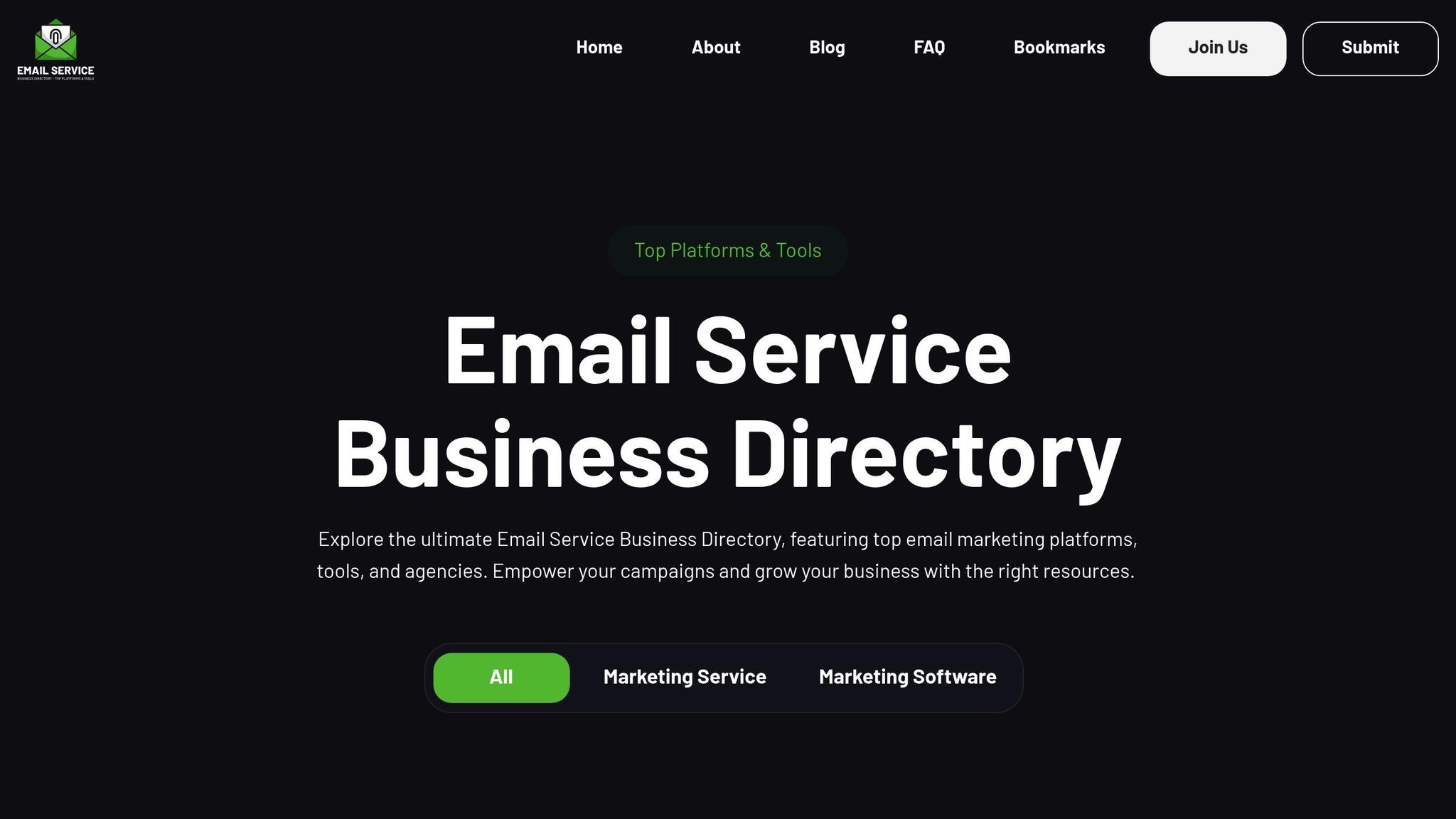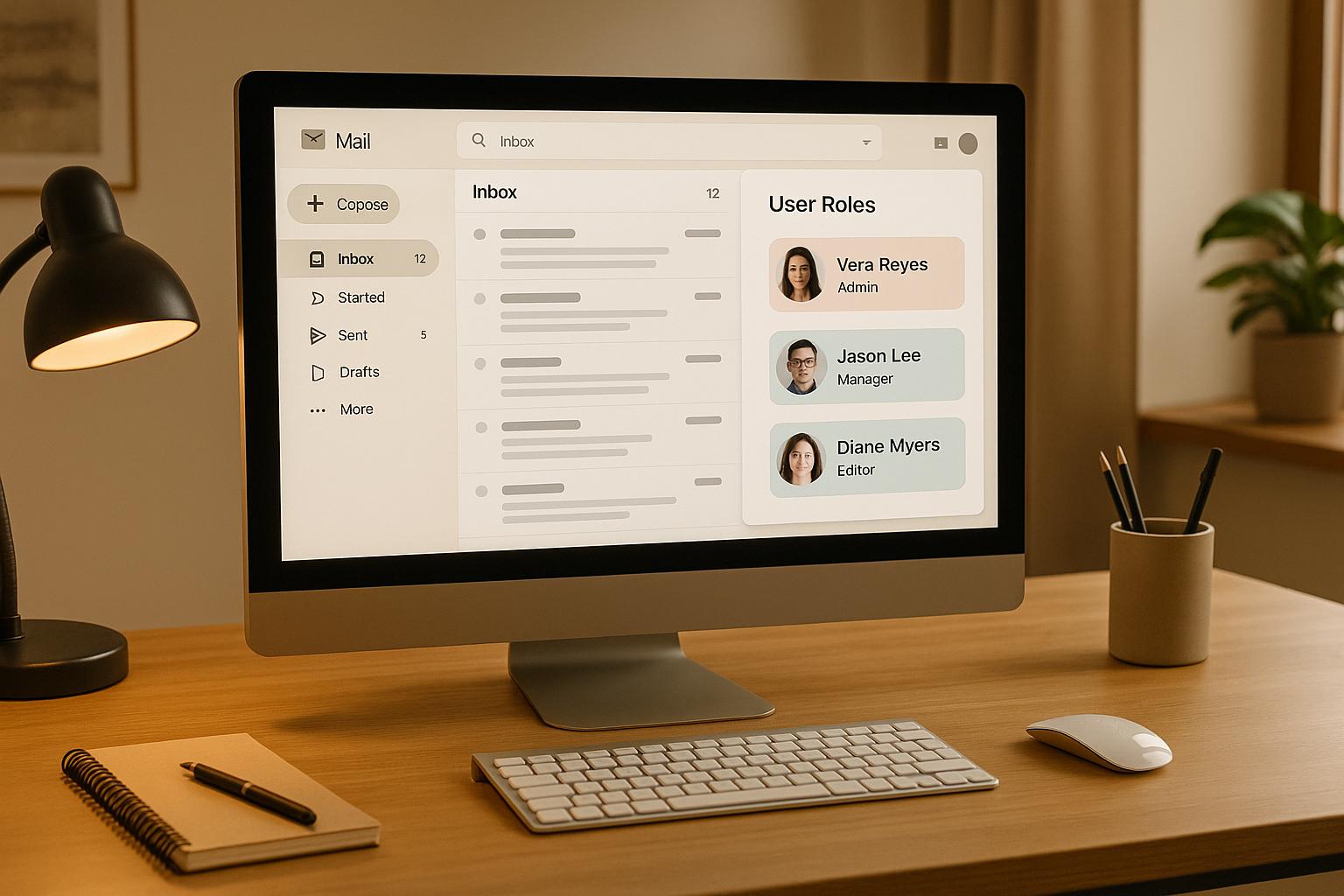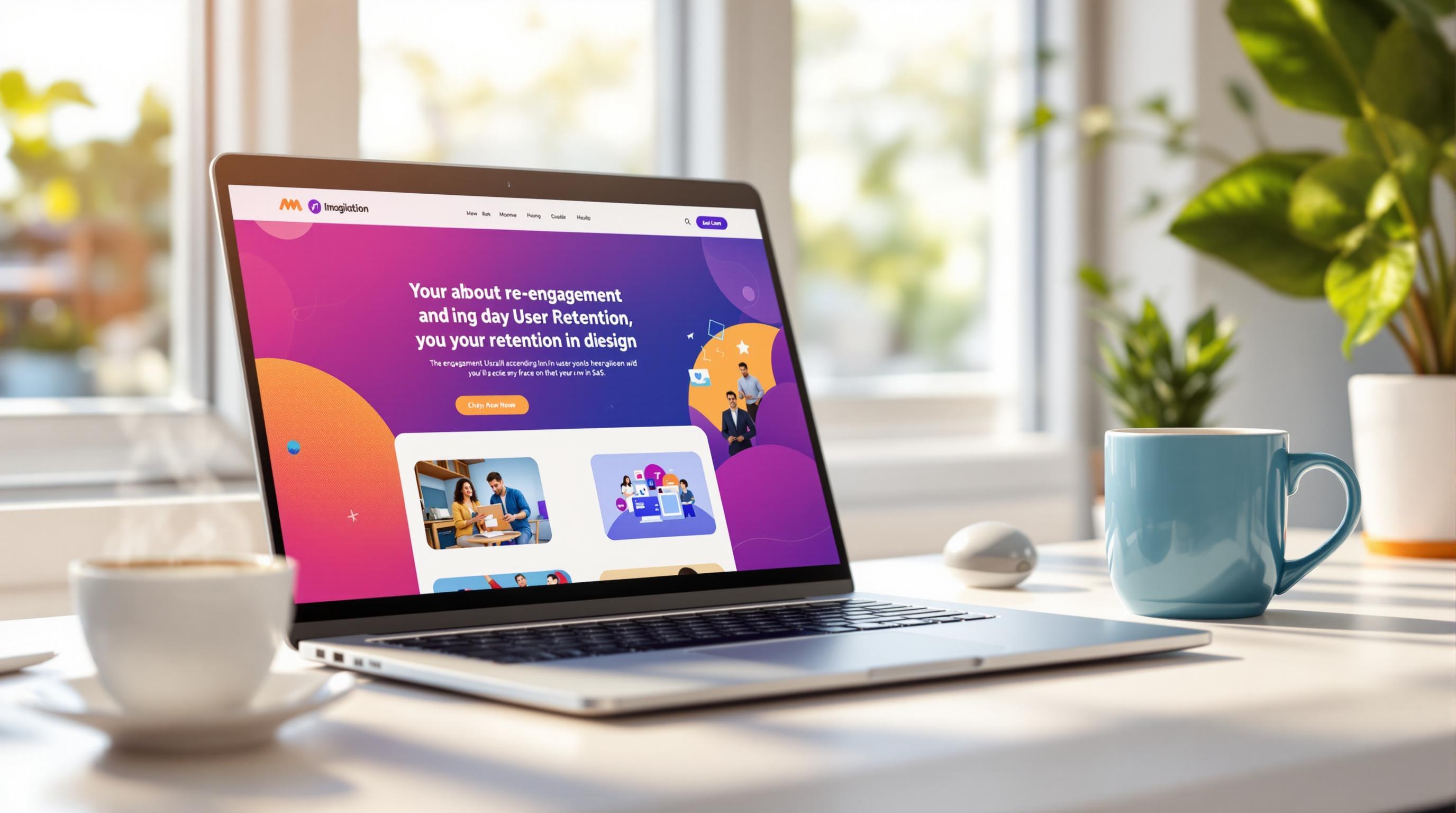Want to measure how much your email personalization efforts pay off? Here's how you can track your costs, calculate revenue, and improve your strategy step by step.
Key Takeaways:
- ROI Formula:
ROI = [(Revenue - Costs) / Costs] × 100
Example: A $5,000 investment generating $25,000 revenue equals a 400% ROI. - Track Costs:
- Tools: Email platforms, CRMs, analytics software
- Content: Template design, A/B testing, segmentation
- Labor: Staff hours, training, consulting
- Measure Revenue:
- Direct sales from emails
- Increased customer lifetime value (CLTV)
- Higher retention and conversion rates
- Boost ROI:
- Use dynamic content like product recommendations or real-time updates
- Leverage predictive analytics to optimize send times and target users
- Test subject lines, content blocks, and timing strategies
By tracking costs, measuring revenue, and refining your approach, you can maximize the value of personalized email campaigns. Let’s dive into the details.
What Is The Relationship Between Email Marketing Cost And ...
Step 1: Tracking Personalization Costs
Start by organizing your expenses into three main categories: software and tools, content and list management, and staff and resources. This breakdown helps set the foundation for calculating the revenue generated by personalization efforts in later steps.
Software and Tool Costs
Successful email personalization depends on having the right tech stack. Here’s a quick look at common tools and their costs:
| Tool Category | Purpose | Typical Monthly Cost Range |
|---|---|---|
| Email Marketing Platform | Handles email automation | $50 - $2,000 |
| CRM Integration | Manages customer data | $25 - $300 |
| Analytics Software | Tracks performance metrics | $30 - $500 |
| Email Validation Tools | Ensures clean and valid email lists | $15 - $200 |
Selecting platforms that integrate well can help lower costs and streamline your operations. Keeping track of these expenses is key for calculating ROI.
Content and List Management Costs
Personalization often requires investment in content creation and list management. Here’s what to consider:
- Content Costs: Includes designing templates, creating dynamic content, conducting A/B testing, and planning segmentation strategies.
- List Management Costs: Covers tasks like cleaning and validating email lists, updating segments, enriching data, and monitoring compliance.
AI-powered tools can save time and resources while maintaining high personalization standards. Be sure to monitor these costs closely for a complete ROI picture.
Staff and Resource Costs
Labor is a major expense in personalization. Here’s how to track these costs:
- Direct Labor Hours: Log the time your team spends on tasks like campaign planning, content creation, list segmentation, and analytics.
- Additional Resources: Account for costs like training, technical support, consulting fees, and freelance work.
To calculate monthly labor costs, multiply the hours spent on personalization by your team’s hourly rates. For instance, if a marketing specialist earns $35/hour and spends 10 hours a week on personalization, that’s $1,400 per month for that role alone. Accurately tracking these expenses is crucial for assessing your campaign’s overall performance.
Step 2: Calculating Personalization Revenue
Sales and Conversion Tracking
To connect email engagement with purchase behavior, ensure your attribution setup is solid. Here's what you need:
| Tracking Component | Tip |
|---|---|
| UTM Parameters | Add tags for campaign, source, and content. |
| Google Analytics 4 | Use enhanced e-commerce tracking to follow user journeys. |
| Purchase Attribution | Link sales to emails and define conversion windows (e.g., 7–30 days). |
| Revenue Segmentation | Compare performance by tracking revenue for each type of personalization. |
Make sure your analytics system can clearly separate personalized revenue from non-personalized revenue. This helps you measure ROI more effectively.
Also, configure your tools to capture both immediate and assisted conversions from personalized emails. These insights will help you evaluate the long-term value of your personalization efforts.
Customer Lifetime Value Impact
Personalization doesn't just drive immediate sales - it also increases long-term customer value. To measure this, focus on these key metrics:
| Metric | How to Calculate |
|---|---|
| Purchase Frequency | Number of orders per customer per year. |
| Average Order Value | Total revenue divided by the number of orders. |
| Retention Rate | Customers retained divided by total customers. |
| Repeat Purchase Rate | Customers with multiple purchases divided by total customers. |
Calculate Customer Lifetime Value (CLTV) by multiplying the average order value, purchase frequency, and customer lifespan. Then, compare CLTV for customers receiving personalized emails versus standard ones.
Tip: Track CLTV changes over 6–12 months to account for seasonal trends. This gives you a clearer picture of how personalization impacts long-term revenue.
Break down your tracking by:
- First-time buyers versus repeat customers.
- Different personalization strategies, like product recommendations or behavioral triggers.
- Customer segments based on purchase history or engagement levels.
This detailed tracking will help you understand how personalization shapes customer behavior over time.
sbb-itb-6e7333f
Step 3: Improving ROI Through Better Personalization
After analyzing costs and revenue, fine-tune your approach to boost ROI by improving personalization. You can increase the effectiveness of personalized email campaigns by optimizing dynamic content, using predictive analytics, and testing personalization strategies systematically.
Using Dynamic Content
Dynamic content turns standard emails into personalized, real-time experiences, increasing engagement and conversions. To get the most out of it, focus on these key elements:
| Dynamic Element | Implementation Strategy | ROI Impact |
|---|---|---|
| Real-time Updates | Show current inventory, pricing, or time-sensitive offers | Encourages immediate engagement and conversions |
| Behavioral Triggers | Recommend products based on browsing or purchase history | Improves click-through rates and conversion chances |
| Location-based Content | Adapt content to the recipient’s time zone or location | Delivers relevant offers, increasing engagement |
| Interactive Elements | Include countdowns, live polls, or dynamic surveys | Boosts engagement and collects useful insights |
Make sure dynamic content updates automatically when the email is opened to ensure the message stays relevant and timely.
Predictive Analytics Methods
AI-driven analytics can help you predict customer behavior and fine-tune your email content. Focus on these areas:
| Analytics Focus | Implementation Method | Expected Outcome |
|---|---|---|
| Send Time Optimization | Use past engagement data to find the best send times | Emails land when recipients are most active |
| Content Preferences | Track clicks and interactions with content | Personalize future emails to match interests |
| Purchase Probability | Analyze browsing and buying patterns | Target those most likely to convert |
| Churn Risk Analysis | Spot patterns in reduced engagement | Re-engage customers at risk of leaving |
Start small - test one or two predictive elements, then expand based on what works best. This lets you measure which features have the greatest impact on ROI.
Testing Personalization Elements
Experiment with subject lines, content blocks, and timing to discover the most effective personalization strategies.
-
Subject Line Testing
Test different approaches, such as including first names, company names, behavioral cues, industry-specific references, or time-sensitive language. -
Content Block Testing
Experiment with various dynamic content strategies:- Placement of product recommendations
- Number of personalized elements in each email
- Combining static and dynamic content
- Positioning of interactive features
-
Timing Variables
Assess the impact of:- Timing emails based on recipient behavior
- Triggering emails after specific actions
- Setting intervals for follow-up sequences
- Adjusting for time zones
Measure each test's performance using metrics like open rates, click-through rates, and conversions. Keep detailed records of your findings to guide future personalization efforts and continually refine your strategy.
Step 4: ROI Measurement Tools
To measure ROI effectively after assessing costs and revenue, you need the right analytics tools. These tools help track and refine your campaigns, ensuring they perform at their best.
Email Analytics Platforms
Email analytics platforms are essential for tracking how well your personalized campaigns are working. Here's what they typically offer:
| Feature Category | Tracking Capabilities | How It Helps Measure ROI |
|---|---|---|
| Engagement Analytics | Open rates, click patterns, time spent reading | Shows how relevant and engaging your content is |
| Conversion Tracking | Links email actions to revenue | Directly ties emails to sales results |
| List Quality Metrics | Bounce rates, deliverability scores | Assesses the health of your email database |
| Segmentation Analysis | Segment performance, behavior patterns | Evaluates how accurate your targeting is |
When choosing an analytics platform, make sure it integrates smoothly with your current tools and that your contact lists are up-to-date for better deliverability.
"Explore expert-written blogs and guides on email marketing platforms, strategies, and best practices to optimize your campaigns and achieve better results." - Email Service Business Directory
For example, a case study from Mailchimp in 2023 revealed that implementing proper analytics reduced bounce rates from 12.3% to 2.1%, significantly improving email deliverability.
The Email Service Business Directory provides additional resources to help you identify analytics tools that align with your specific campaign needs.
Email Service Business Directory Tools

The Email Service Business Directory also highlights tools designed specifically for measuring personalization success. Here's how it helps businesses find the right fit:
| Evaluation Criteria | Why It Matters |
|---|---|
| Analytics Depth | Compares reporting capabilities |
| Integration Options | Ensures compatibility with your systems |
| Scalability Features | Matches tools to your business growth |
| Cost-effectiveness | Balances features with budget |
For precise ROI tracking, look for platforms that offer:
-
Performance Monitoring and Reporting
Track campaign metrics in real time, generate automated ROI reports, and measure revenue impact alongside engagement patterns. -
Advanced Segmentation Analytics
Compare how different segments perform, assess the success of personalization efforts, and calculate ROI for each segment.
Choose tools that combine detailed analytics with strong data security. Platforms that integrate standard metrics with AI-driven insights can provide a deeper understanding of your ROI.
Conclusion: Getting the Most from Email Personalization
Key Takeaways
To measure the return on investment (ROI) from email personalization, it's crucial to track costs, measure revenue, and use analytics effectively. These steps not only improve conversion rates but also help reduce inefficiencies. Focusing on these areas allows marketers to better understand the results of their efforts and make improvements over time.
Practical Steps
Here are some actionable steps to help you improve your email personalization strategy and maximize ROI:
-
Set Clear Benchmarks
Start by defining key performance indicators (KPIs) like open rates, click-through rates (CTR), and conversion values to measure success before making any changes. -
Use Advanced Analytics Tools
Invest in tools that help you analyze trends and identify areas where your campaigns can improve. -
Refine with Data Insights
Continuously analyze customer behavior and campaign performance to adjust your content, timing, and audience segmentation for better results.
FAQs
How can I track and manage the costs of email personalization to accurately calculate ROI?
To effectively track and manage the costs of email personalization, start by identifying all associated expenses. These may include software subscription fees, design and content creation costs, and any additional charges for advanced personalization features like AI-driven tools.
Once you've outlined your costs, compare them to the revenue generated from your email campaigns. This can include direct sales, increased customer retention, or higher engagement rates. Use metrics like cost per email sent, conversion rates, and average revenue per email to measure performance.
For a more streamlined process, consider using specialized tools available through resources like the Email Service Business Directory. These platforms can help you manage campaign expenses and provide detailed analytics for accurate ROI calculations.
What are the key metrics to evaluate how email personalization impacts customer lifetime value over time?
To measure the long-term impact of email personalization on customer lifetime value (CLV), focus on these key metrics:
- Customer Retention Rate: Track how well personalized emails help retain customers over time. Higher retention rates often indicate successful engagement.
- Average Order Value (AOV): Analyze whether personalized messages encourage customers to spend more per transaction.
- Repeat Purchase Rate: Measure how often customers return to make additional purchases after receiving personalized emails.
- CLV Growth: Compare the lifetime value of customers who receive personalized emails versus those who don’t to assess overall impact.
By consistently monitoring these metrics, you can better understand how email personalization contributes to long-term customer relationships and revenue growth.
How can predictive analytics improve personalized email campaigns and increase ROI?
Predictive analytics can significantly enhance the effectiveness of personalized email campaigns by using data-driven insights to anticipate customer behavior. By analyzing past interactions, purchase history, and engagement patterns, you can create highly targeted content that resonates with your audience. This approach not only improves open and click-through rates but also drives conversions, ultimately boosting ROI.
To get started, leverage tools that integrate predictive analytics into your email marketing strategy. These tools can help identify trends, segment your audience more effectively, and recommend the best times to send emails for maximum impact. By combining these insights with personalization, you can deliver campaigns that feel tailored to each recipient, fostering stronger customer relationships and better results.


